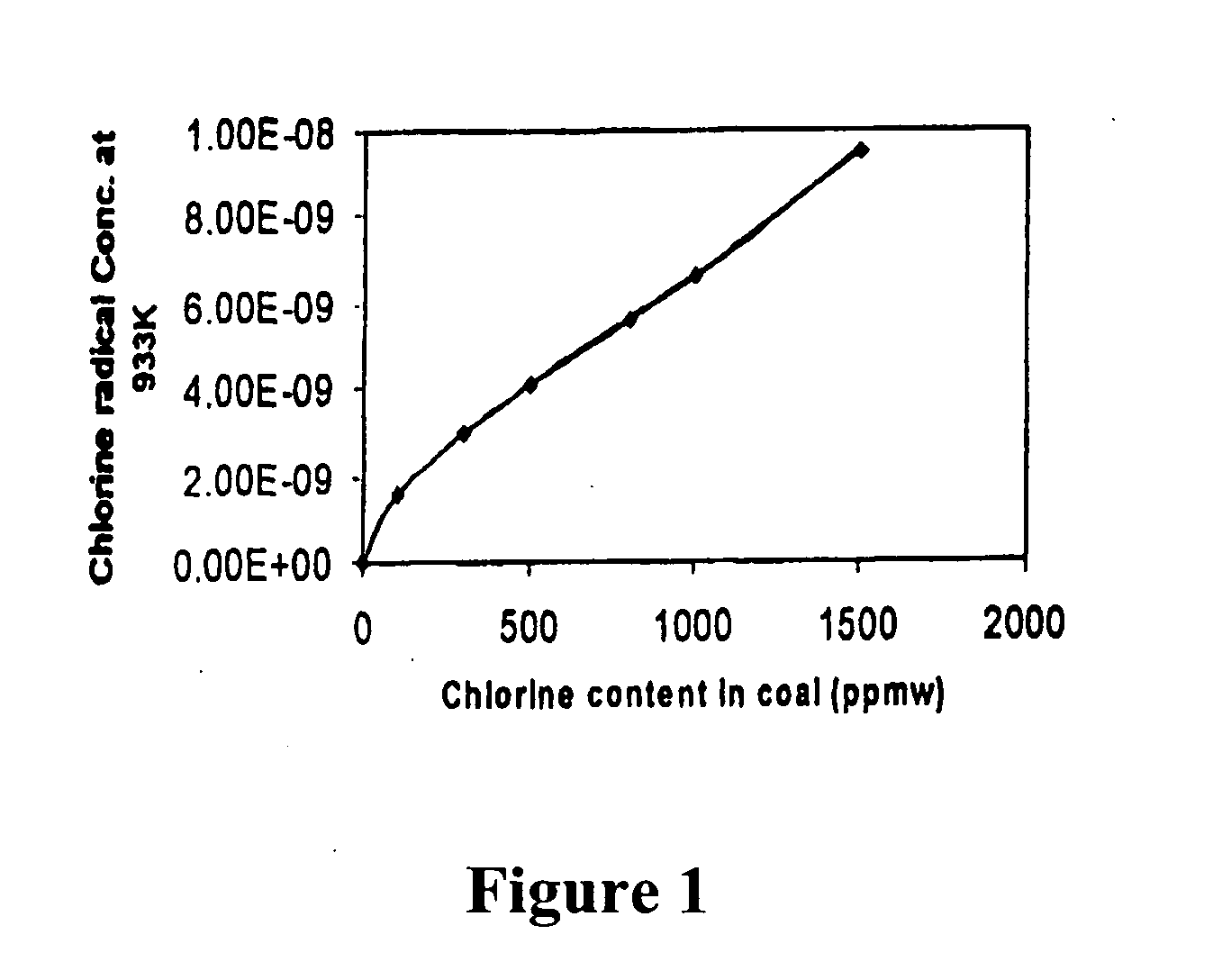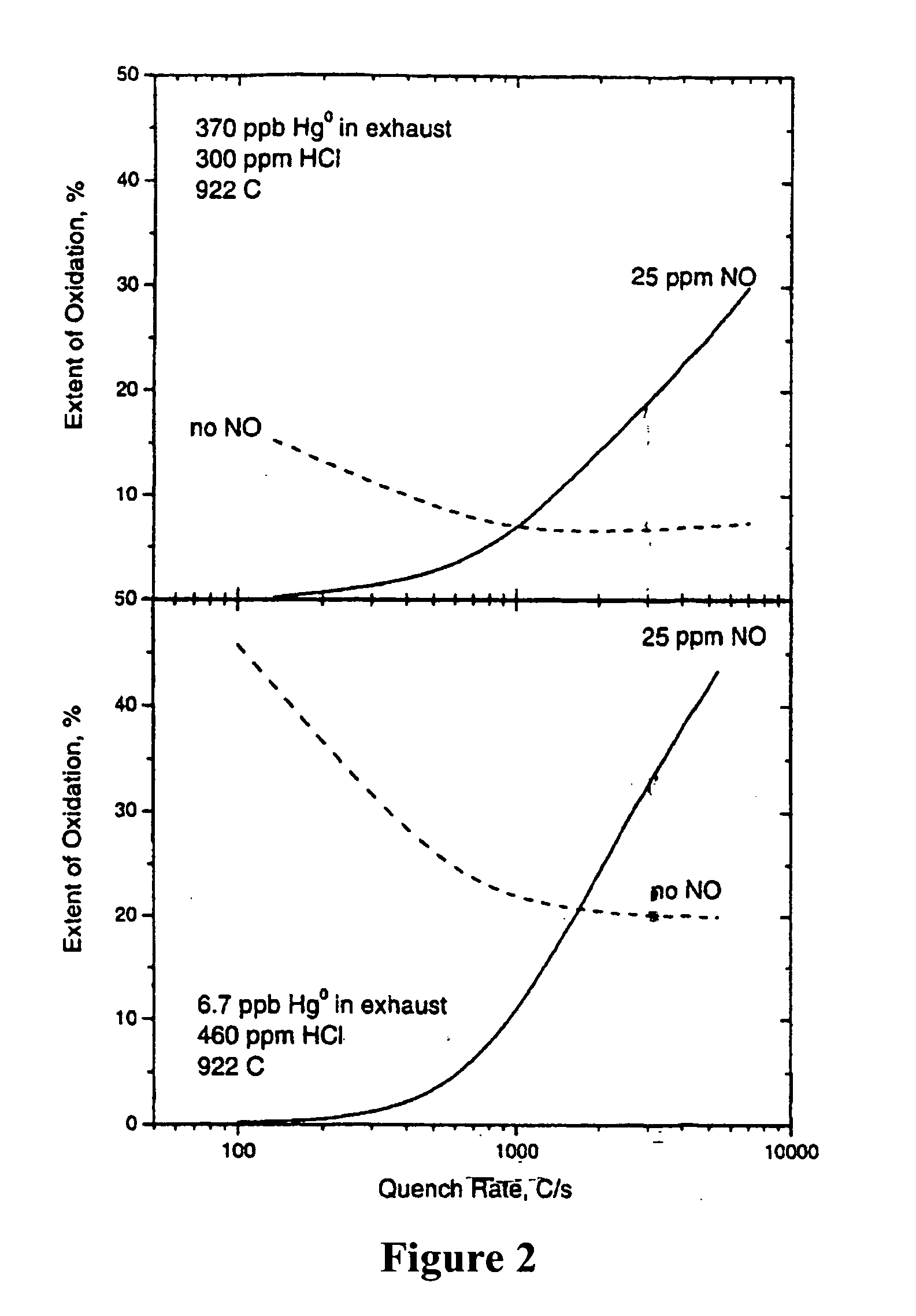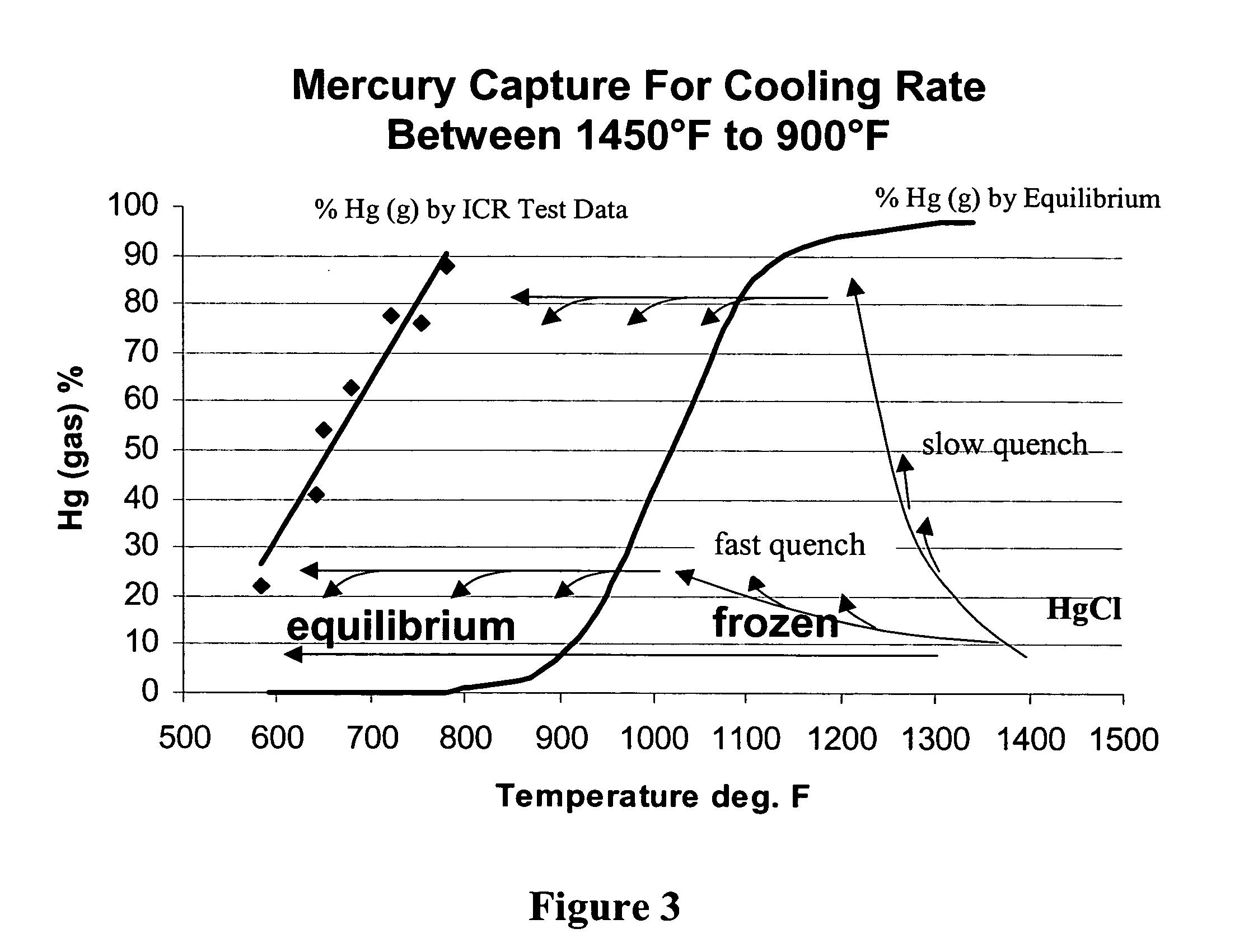Method of removing mercury from flue gas through enhancement of high temperature oxidation
a high temperature oxidation and flue gas technology, applied in the direction of separation process, dispersed particle separation, chemistry apparatus and processes, etc., can solve the problems of high carbon to mercury ratio, high cost of collection by the use of activated carbon, and so on, and achieve the effect of enhancing the formation of mercury chlorid
- Summary
- Abstract
- Description
- Claims
- Application Information
AI Technical Summary
Benefits of technology
Problems solved by technology
Method used
Image
Examples
Embodiment Construction
[0021] In the inventive process we oxidize mercury with chlorine to HgCl2, HgCl, HgO and other species, but we believe that the HgCl2 is the predominant oxidized specie. We believe that HCl is released from the burning coal, and subsequently partially decomposes into atomic (Cl) and molecular (Cl2) chlorine that oxidize mercury in the gas phase. We believe that HCl also chlorinates sites on the surfaces of unburned carbon and some of the minerals in flyash, and that these chlorinated sites also oxidize elemental mercury into mercuric chloride, HgCl, which subsequently leaves the surface and oxidizes to HgCl2. The Cl and Cl2 concentrations are dependent upon the HCl concentration, the OH concentration, and the temperature as well as several other species. The reaction pathway to mercuric chloride in the gas phase is said by Widmer to be:
Hg+Cl+M=HgCl
HgCl+Cl2=HgCl2+Cl
The reaction pathway to mercuric chloride on the particle surfaces is said by Niksa to be:
HCl+S-Open=S—Cl+Cl
S—Cl+H...
PUM
| Property | Measurement | Unit |
|---|---|---|
| Temperature | aaaaa | aaaaa |
| Temperature | aaaaa | aaaaa |
| Temperature | aaaaa | aaaaa |
Abstract
Description
Claims
Application Information
 Login to View More
Login to View More - R&D
- Intellectual Property
- Life Sciences
- Materials
- Tech Scout
- Unparalleled Data Quality
- Higher Quality Content
- 60% Fewer Hallucinations
Browse by: Latest US Patents, China's latest patents, Technical Efficacy Thesaurus, Application Domain, Technology Topic, Popular Technical Reports.
© 2025 PatSnap. All rights reserved.Legal|Privacy policy|Modern Slavery Act Transparency Statement|Sitemap|About US| Contact US: help@patsnap.com



